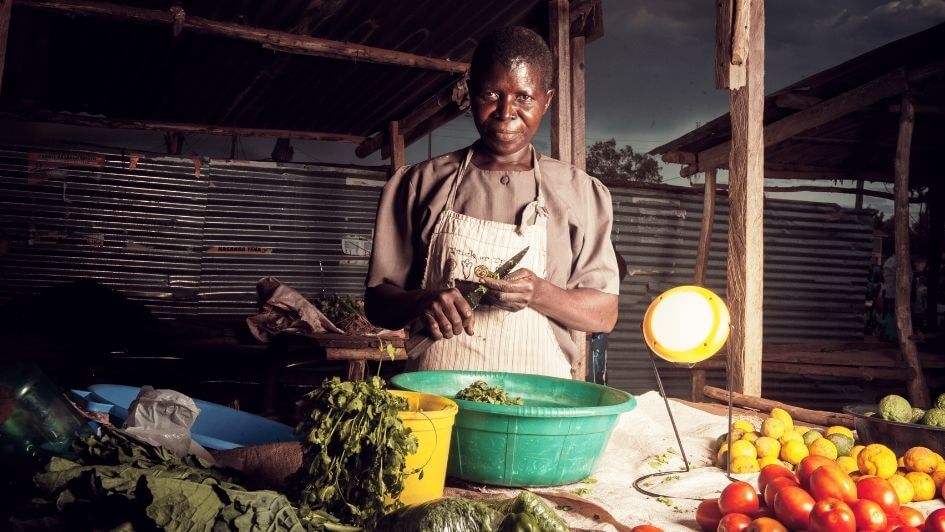Solar energy companies have delivered power to tens of millions of rural off-grid customers over the past decade. But even many of those initial customers, who are at the top of the “bottom of the pyramid”, are struggling to pay for energy during the pandemic. This raises an important question: post-COVID, can current public or private business models reach the most vulnerable and end energy poverty by 2030? And if not, how do we address that affordability gap?
The short answers: no, and demand-side subsidies.
Sub-Saharan Africa (SSA) still has 548 million unelectrified people as of 2018. The region is also home to 20 countries with the lowest energy access rates. Affordability is an especially urgent issue at a time people are being pushed into poverty due to reduced incomes in the wake of the pandemic. The World Bank estimates that about 23 million people will fall into extreme poverty due to the impact of the global pandemic. Moreover, it is expected that by 2030, 228 million people worldwide will remain without access to electricity due to affordability and access constraints. With the global pandemic, this number is likely to go up unless additional ways of increasing electrification rates are implemented.
Efforts to address rural electrification in SSA through off-grid solar have so far mostly focused on developing a robust enabling environment and implementing supply-side subsidies. The enabling environment was improved through setting up national electrification plans, tax exemptions, quality standards, consumer awareness and capacity building programs. In addition, grants, concessional financing, and results-based financing reduced upstream risks for businesses, thereby encouraging companies to scale up operations and increase access for customers in challenging markets. However, these initiatives have not adequately addressed the affordability gap for the poorest and vulnerable consumers. Additional strategies are needed to keep Sustainable Development Goal 7 (access to clean and modern energy for all) on track, especially from a consumer perspective.
A recent study by Africa Clean Energy Technical Advisory Facility (ACE TAF) shows that demand-side subsidies are an essential tool for governments to achieve SDG 7 and ensure no one is left behind on the path to universal access. Unlike other subsidies, demand-side subsidies close the affordability gap by directly reducing the price paid by end users for energy. Such subsidies can be provided directly to consumers or through companies with the intent of reducing the price for end users who cannot afford a product, allowing private companies to continue selling products to those who can pay full price in a commercial manner. Leaving no one behind means governments may need to simultaneously implement both supply side and demand side subsidies, while carefully managing the risk of market distortion. To manage the risk, the subsidy program needs to be well designed, taking into consideration the unique context in each country.
In designing demand side subsidies, there are several principles that can be applied to each country’s unique set of resources. These principles are:
-
Subsidies should be developed through extensive discussions with relevant stakeholders and be clearly communicated to ensure stakeholder alignment.
-
Subsidies should be efficiently targeted based on existing data so that there is no overlap between commercial and subsidized populations.
-
The level of subsidy should reflect the affordability gap and avoid giving away products for free.
-
Verification systems should be robust to ensure that only the correct beneficiaries receive the subsidy.
-
Stakeholder capacity building initiatives should be budgeted from the onset of a program. There should be enough resources to sensitize beneficiaries, government agencies and the private sector.
-
Processes should be designed with the aim of maximizing the total subsidies disbursed to beneficiaries, while still maintaining efficiency.
-
Processes should incorporate robust monitoring and evaluation and audit processes to ensure operations transparency.
-
The DSS program should be designed with the long-term sustainability of both the program and of commercial markets in mind.
Togo is already implementing a demand-side subsidy program. The government plans to deploy 555,000 solar home systems, 300 mini-grids and 400,000 on-grid connections to achieve universal electrification by 2030. Specifically, for solar home systems, the government is providing an enabling environment through consumer awareness campaigns, VAT exemptions and a line of credit. On the other hand, private sector companies are financing, distributing, marketing and servicing the solar systems. Only companies that can remotely monitor the products qualify to participate in the program. Eligible customers are identified through information collected from partnering telecommunication companies and the national postal agency then aggregated into a common database. Eligible customers receive a subsidy of US $4 for 36 months. By December 2019, 100,000 households had already been electrified.
2030 is fast-approaching, and the off-grid solar sector must ensure that the most vulnerable populations are not left behind. It is now more urgent than ever for governments, donors, and the private sector to come together in this effort.
ACE TAF a four-year, DFID-funded program making in-roads in shaping market development for off-grid solar, is operating in 14 countries: Ethiopia, Ghana, Kenya, Malawi, Mozambique, Nigeria, Rwanda, Senegal, Sierra Leone, Somalia, Tanzania, Uganda, Zambia, Zimbabwe. The Facility’s focus is on addressing barriers affecting market development, improving solar policies and regulations, strengthening coordination among the different stakeholders and addressing knowledge gaps. For more information visit www.ace-taf.org
